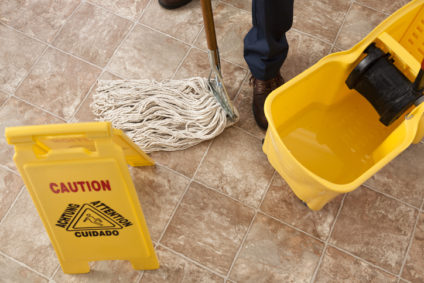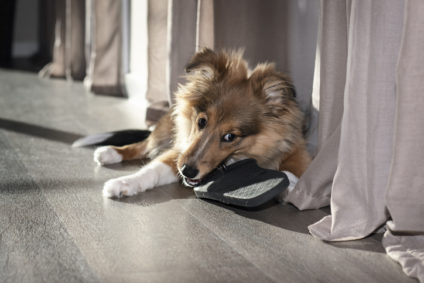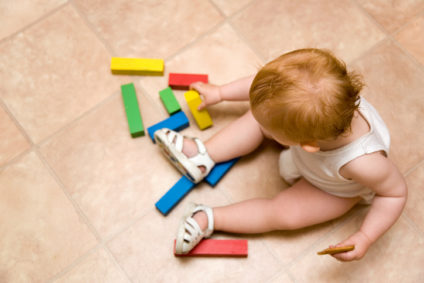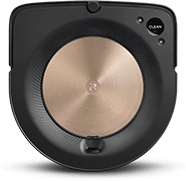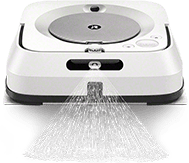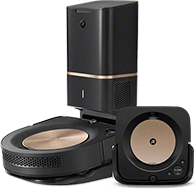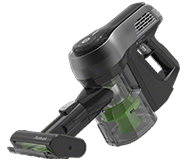How To Clean Linoleum Floors (Daily or Deeply)
You might be wondering how to clean linoleum floors when… There’s streaking. There’s discoloration. Maybe there’s even some scratches, scrapes, and bubbles.
Whether you’ve seen some damage on your floors or you’re trying to avoid it by cleaning your linoleum floors properly, you know that cleaning requirements aren’t the same as they are for vinyl flooring, laminate floors, or hardwood.
Don’t worry, we’ve got your floors covered with this guide on how to clean your linoleum floors. Here’s what we’ll cover:
- How to tell if your floor is linoleum
- How to clean your floors on the regular
- How to deep clean linoleum that’s super dirty
- Cleaning solutions that are great for linoleum (and some that are not so great)
- How often you should clean your linoleum
Are you sure your floor is linoleum? Here’s how to tell
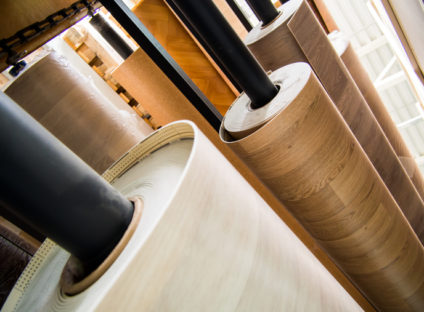
Understanding how to clean it properly helps you keep it looking in top shape, but there’s a problem:
Unless you’re a homeowner who analyzed your flooring options and picked out your flooring yourself, you might not know whether your flooring is vinyl or linoleum, or even laminate, especially not from a simple first look. That’s because they’re all designed to mimic real wood. And in more recent years they succeed magnificently.
Difference between linoleum and vinyl flooring
- Linoleum is a much older material than vinyl or laminate. If your floors haven’t been changed since the 1950s (rare, but possible) then you most likely have linoleum. That said, any linoleum that old is likely to less closely resemble real wood. And that’s an indicator itself.
- Look for signs of wear on the floor’s surface. While linoleum comes in a few different forms (sheets, planks, tiles), with planks being the thickest and most durable, linoleum is one of the most scratch susceptible flooring you can choose. You’ll generally see more scratches and marks on linoleum if your floors have been around for a while (especially if they haven’t been sealed in years).
Linoleum tends to feature earthier colors. Linoleum is made from linseed oil (flax), and often bolstered with cork and wood dust (using up the byproduct of the milling industry). Sometimes manufacturers also use limestone or rosin. This gives linoleum a more earthy look than other floor types (which is typically a yellowish tinge).
- Look for water damage. If your flooring has bubbles or warping, it doesn’t necessarily mean it’s linoleum, because a lot of flooring types face water damage if they don’t have a waterproof layer. That said, linoleum is still a natural product with wood pulp and cork, making it more susceptible to water damage.
- Is it a sheet? While linoleum can come in sheets, tiles, or planks, sheets were the most common form of linoleum for many years. They’re not as common today, because a professional has to install them. And, if damaged, you have to replace the entire floor. But, sheets are still used today, and if your floors haven’t been changed in a while, this might be one of the best indicators.
There is one very definitive way to determine if your floors are linoleum by yourself, but it’s involves poking a small hole in your floor – not quite ideal. Try calling a flooring professional.
General and daily cleaning of your linoleum floors
Linoleum flooring is fairly easy to clean on a daily basis, but there are a few things to note to avoid buildup and stains.
The first thing to note is you should always check with your manufacturer for best care instructions. Secondly, remember that linoleum is glued down to your floor. That means any type of excessive heat is going to cause that glue to loosen and the planks, tiles, or sheets to separate from the base.
We’ll also remind you that linoleum flooring is made of wood pulp and cork.
That means you shouldn’t use excessive amounts of water to clean your floor. It’s a double whammy if you use hot water.
Unfortunately, the amount of water that most traditional mops hold is too much for linoleum. (Think of that huge mop a custodian will drop in a gallon of hot water and then wring out. That’s a hard no.) A microfiber mop with an attached spray bottle is generally the best for most flooring types, as it’s quick drying and doesn’t spread enough liquid to soak into floor seams.
To clean your linoleum floors on a daily basis (or regular, if regular isn’t daily):
- Sweep your floors in the direction of the “grain,” if it mimics wood. The reason for this is, it’s very easy for the smallest grains of dirt to build up in your flooring. You might not notice it right away, but you will over time.
- Sweep a dry microfiber cloth or dust mop over your floors after sweeping to get the remaining bits of dirt your broom couldn’t pick up.
- An alternative to sweeping your floors is to vacuum them, if you have a hardwood floor compatible vacuum cleaner. A hardwood floor vacuum, or a Roomba® robot vacuum (heyyy), can often suck the dirt out of the deeper crevices within your floor.
- For general mopping, use a microfiber pad with a linoleum floor cleaner (or a mixture of water, cup of vinegar, and a couple drops of dish soap to make a slightly soapy water) in a spray mop or spray bottle. You could also use a Braava® robot mop to remove that chore and keep your floors spotless.
Polishing up your linoleum floors for that impeccable shine
Because it’s made of wood pulp and other sensitive materials, you need to seal linoleum floors every single year.
This alone can help your linoleum floors retain a shine. Without sealant, because they’re susceptible to scuff marks and scrapes, they’ll look dull and dingy over time.
If you want to polish your floors, you can use a linoleum specific polish every six months (avoid doing so more often as it’ll cause build up). However, simply sealing your floors yearly is often enough to give them that desired polished look.
As always, we recommend you check with your manufacturer’s care instructions.
Can you use linseed oil or baby oil on linoleum floors?
If you don’t want to use a thicker wax based polish on your floors, or want to achieve that shine more often, linseed oil or baby oil are great options.
Not only are they safe to use on your floors, but they’re often used to shine up antique furniture and wood products because they soak into the wood well and leave a lasting sheen.
If you’re restoring your linoleum, you can even use linseed or baby oil before adding a sealant (and after a deep clean) to add that extra bit of lasting shine.
This may go without saying, but this oil makes your floors slippery! Trust us, we know from experience. So watch your step after initially applying your treatment.
For a more general, or regular polish:
- If compatible, add either oil to your cleaning solution, whether inside a spray bottle or a mop bucket (spray bottle recommended). You need approximately 3 drops of oil per gallon of water or solution.
- Spread the oil with the cleaning mixture as you mop.
- Ensure that you run a dry microfiber cloth or mop map over your floors after mopping to remove any excess water (to avoid weakening the glue that holds it to the floor over time).
Deep cleaning linoleum that’s reeaallllyyyy dirty (set in stains, pains, and deep grains)
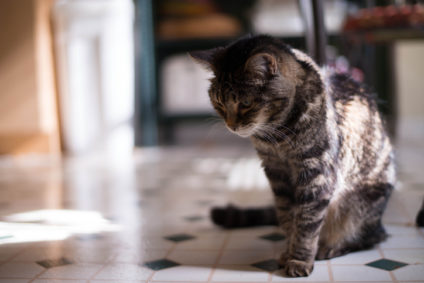
Remember, it’s still made of wood pulp and a linseed film. Regardless of its wear layer and sealant, it still has pores and grooves. Additionally, most linoleum floors have a texture added to them to make them look a little more authentic to stone or wood.
When dirt builds up in those grooves (and it will, regardless of your cleaning habits), it starts to make your floors look dull and dingy.
For this, you need to conduct a deep clean. You’ll need:
- A scrubbing brush
- Rubbing alcohol
- Gloves
- Clean rags, old towels that’ve been recently cleaned, or paper towels
Here are some deep cleaning tips for your linoleum:
- Simply add the rubbing alcohol to your linoleum, either with a spray bottle or by spilling a bottle caps worth of the alcohol onto a small area of your floor.
- Use the scrub brush on your floors in a back and forth motion across your entire floor, working in small sections at a time.
- Use paper towels or a clean rag to wipe up excess moisture. You don’t want any liquid sitting on your floors for an extended period of time (even 15 minutes is too long).
That’s right, most of the dirt and debris clogging the grains of your linoleum will come up with a thorough scrub with a soft bristled brush, some rubbing alcohol, and a little bit of elbow grease.
You can, of course, mop your floors after this is done to remove any remaining grime. It’s also a good idea to seal your floors after a scrubbing like this.
Linoleum doesn’t tolerate scrubbing very frequently, so if you only do this once a year before sealing, your floors will continue to look bright and vibrant.
Getting stains out of linoleum (Can you even?)

Cloth-based rugs are generally safe on a linoleum floor, as long as they aren’t continually wet. In a bathroom that can be hard to avoid. But opting for a rubber or latex backed rug will cause far more damage.
(It’s a chemical change, activated by the heat from the sun and your daily shower)
Stains may also be caused by rust, food, plants that stand on your linoleum, and even polish itself.
Most stains are in the thin wear layer of the linoleum, which means it’s seeped through the sealant (if you’ve been sealing your floors yearly).
If you’d like to use a natural cleaner and the stain isn’t too tough, you can use a mixture of baking soda and white vinegar.
- Mix your baking soda and vinegar in a small bowl.
- Apply the mixture with a tooth brush or other soft bristled brush, depending on the size of the stain.
- Wipe the area with a damp cloth to remove the baking soda.
- Repeat until you’ve removed the stain.
- Finish by drying with a clean microfiber rag.
For more stubborn yellow stains, there are a few things you can do:
- Mix 50% bleach with 50% water
- Lay a clean white rag saturated (wring it out so it’s not soaked) in the mixture on the floor for 30 minutes.
- Wipe up excess moisture and repeat the process until the stain is gone.
This is best done in corners or parts of your floor that aren’t high traffic areas. It’s also safer to seal your floors after a stain removal using bleach, as it’ll weaken the wear layer on your flooring.
For stains that appear “grey”: it’s actually a water stain, which you can’t remove. Your appliances can leak and cause mold and mildew to build up in the linoleum. If the stain is a bit grey, that’s likely what it is. In that case, it’s in the backing of the linoleum, and won’t come out with simple cleaning. You may need to replace it.
Why is my floor still dirty after mopping?
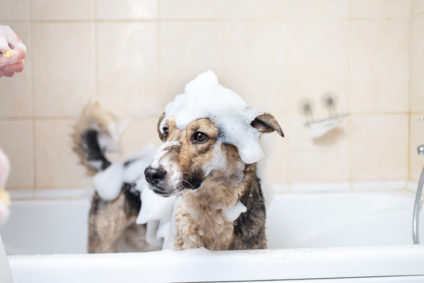
But this actually causes residue to build up on your floors, especially in those deeper grooves and dimples in your flooring.
For some cleaners with a lot of soap – which can be hard to completely rinse off from your floors – it’ll actually attract dirt and grime and keep it from being removed with a simple sweep or vacuum.
Beyond cleaners, your floors can look dull and dingy, even with mopping if the dirt has worked its way deeper into the pores than you can reach with a mop. For that, you may have to scrub with rubbing alcohol and a soft bristled brush as explained earlier.
Can you restore an old linoleum floor? (And how?)
Despite more susceptibility to scratches, water damage, and general wear, linoleum can still last decades.
If they haven’t been cleaned in a really long time, and you’re trying to restore them, there are a few ways to restore your floors.
- Consult a professional cleaning service or restoration service. Depending on the scale of the problem, they’ll either simply buff out your floors with a buffing machine or will strip the wax and sealant from your floors and refinish them.
- Rent a floor buffer to do a restoration yourself (for the bold and brave DIY-ers out there).
- Use the rubbing alcohol and scrub brush method if the linoleum is simply dirty.
- Remove stains using the above methods, mop, and reseal your floors.
Cleaning solutions that are great for linoleum (and some that are not so great)
While there are a lot of great cleaners out there for linoleum, some of the best are actually the simplest and most natural.
That makes sense since it’s an eco-friendly material.
Those cleaners include:
- Vinegar
- dish soap
- castille soap
- Specifically formulated linoleum floor cleaner

At worst, they may damage your floors with too much liquid, heat, or chemicals. The worst offender of this is any cleaner that’s ammonia-based.
Any ammonia-based cleaners (which is more common than you may realize), will strip the finish on your floors and effectively open your hard floors up to excessive damage, bubbling, warping, and scratches.
Will vinegar damage linoleum floors?
Vinegar may cause some wear over time if your floors aren’t properly sealed, precisely because it’s an acidic cleaner.
This, of course, applies to all acidic cleaning products that touch unsealed floors.
(It’s always wise to check your manufacturer’s instructions to ensure any type of vinegar solution won’t damage your particular floor.)
Can you use apple cider vinegar to clean linoleum floors?
Just like white vinegar, apple cider is a great linoleum floor cleaner due to its acidic nature and its lack of soap and residue.
That said, apple cider vinegar is far more likely to leave a residue on your floors compared to white vinegar.
Will hot water damage linoleum floors?
Yes.
Linoleum is glued to your floor. Any time you use hot water or a steam mop, you’re exposing it to temperatures that may cause the glue to separate the linoleum from the subfloor.
So it’s not a very good idea to use hot water on linoleum floors, especially over any lengthy period of time.
This is how often you should clean your linoleum (and keep them that way)
For small, simple cleans, you can sweep, vacuum, or even mop daily. In fact, this can help keep your floors looking good for longer if you’re using the right cleaners and the bristles on your broom or vacuum are soft.
If you do mop daily, or even once a week, be sure that you’re drying your floors right after (or that you’re using a damp mop or spray mop – or Braava® robot mop – to use minimal cleaner that dries quickly).

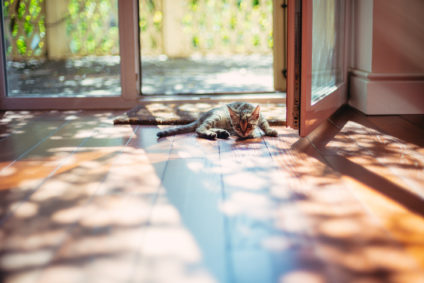 Linoleum tends to feature earthier colors. Linoleum is made from linseed oil (flax), and often bolstered with cork and wood dust (using up the byproduct of the milling industry). Sometimes manufacturers also use limestone or rosin. This gives linoleum a more earthy look than other floor types (which is typically a yellowish tinge).
Linoleum tends to feature earthier colors. Linoleum is made from linseed oil (flax), and often bolstered with cork and wood dust (using up the byproduct of the milling industry). Sometimes manufacturers also use limestone or rosin. This gives linoleum a more earthy look than other floor types (which is typically a yellowish tinge).